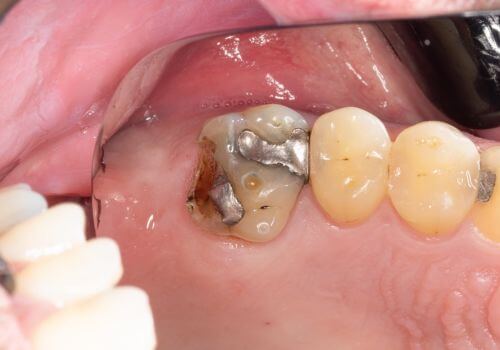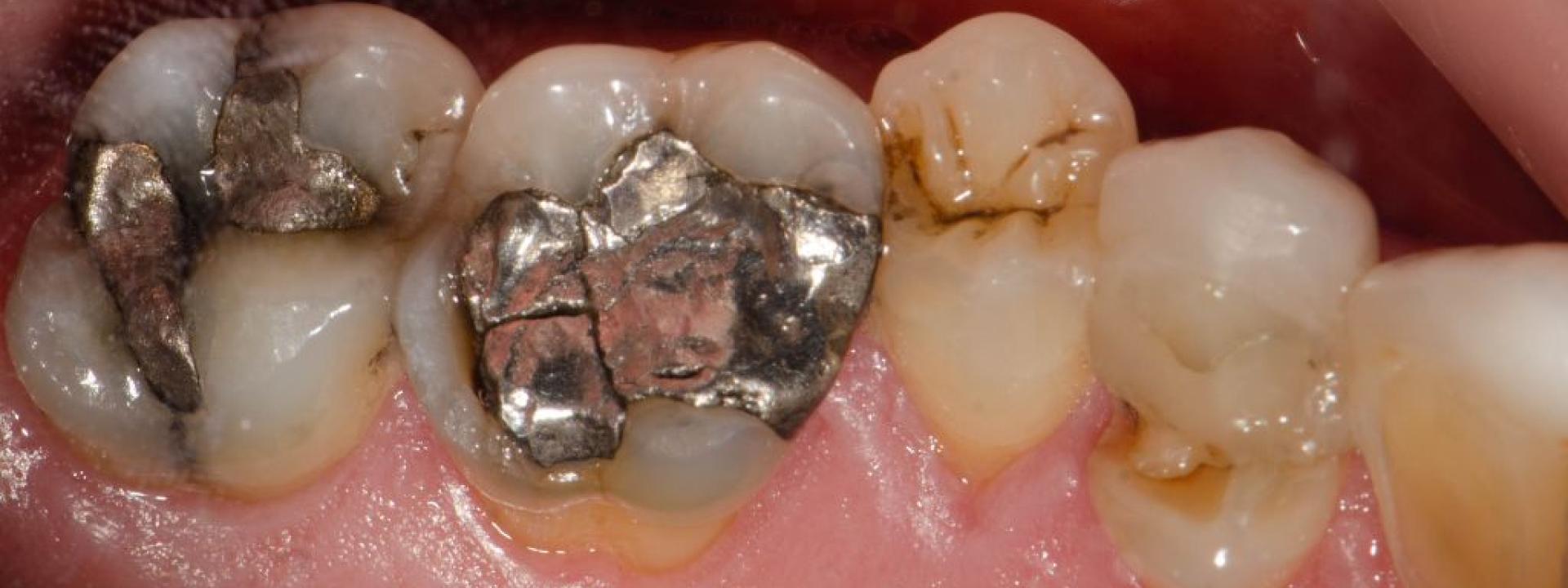The dental industry has undergone a significant transformation over the past two decades. Once considered the gold standard for dental restorations, mercury amalgam fillings have largely fallen out of favor among modern dental professionals.
Mercury amalgam fillings are approximately 50% mercury mixed with silver, tin, copper, and other metals. While these fillings served patients for over 150 years, mounting evidence and superior alternatives have prompted most dentists to abandon this traditional approach. Let’s take a look at a few of the main reasons dentists are moving away from mercury-based fillings.
The Five Primary Concerns with Mercury Amalgam Fillings
1. Health and Safety Risks
Vapor release is the primary concern associated with mercury amalgam fillings. Research shows that they continuously release small amounts of mercury vapor, especially during chewing, grinding, and exposure to heat. The vapor gets absorbed into the bloodstream and can accumulate in the brain, kidneys, and liver.
According to the World Health Organization, dental amalgam is a leading cause of mercury exposure. While regulatory agencies maintain that current exposure levels are within acceptable limits, many patients and practitioners prefer to eliminate the risk by using mercury-free alternatives.
Chronic mercury exposure can cause neurological symptoms, including memory problems, mood changes, and cognitive difficulties. Pregnant women, children, and individuals with compromised immune systems are especially vulnerable to mercury’s harmful effects.
2. Environmental Impact
Mercury amalgam fillings not only pose potential health risks but also carry significant environmental consequences. Dental practices must follow strict waste management protocols to prevent mercury from contaminating water systems. Even after a patient’s lifetime, amalgam continues to have an impact—during cremation, mercury vapor is released into the atmosphere, adding to air pollution.
Because mercury is so difficult to remove from wastewater, it often makes its way into rivers, lakes, and oceans, where it accumulates in fish and seafood. Over time, this cycle contributes to widespread public health concerns that reach far beyond the dental office.
As responsible dental professionals, we are committed to reducing this environmental burden while ensuring excellent care for our patients. By choosing mercury-free alternatives, we protect both individual health and the environment, all while delivering effective, long-lasting treatment solutions.
3. Aesthetic Limitations
Mercury amalgam fillings create noticeable dark spots that become more apparent as patients age and their gums recede. Often, the stark contrast between the silver fillings and the patient’s natural tooth color impacts their confidence and willingness to smile openly. With the rise of social media, video conferencing, and close-up photography increasing awareness of dental aesthetics, traditional amalgam fillings simply do not meet contemporary expectations.
The dark metal can also cause underlying tooth discoloration over time. Mercury and silver particles migrate into the tooth, creating permanent staining that affects the entire tooth. This discoloration persists even after amalgam removal, so restoring natural tooth color requires additional treatment.
4. Expansion and Contraction Issues

Mercury amalgam fillings expand and contract more dramatically in response to temperature changes than the natural tooth. Hot beverages cause expansion while cold foods trigger contraction, creating stress within the tooth structure.
Over time, this expansion and contraction can cause tooth fractures, especially in older restorations. Constant mechanical stress weakens the remaining tooth structure, potentially leading to more extensive damage that may require crowns or a root canal. Some patients also experience sensitivity due to thermal expansion and contraction.
5. Biocompatibility Concerns
Some patients develop allergic reactions or sensitivities to the components of mercury amalgam. These may appear as oral lesions, gum irritation, or even systemic symptoms. Although such reactions are relatively rare, they can cause significant discomfort for those affected.
Another concern arises when amalgam fillings are placed near other metals in the mouth, such as gold crowns or orthodontic appliances. This interaction can create small electrical currents, known as galvanic action, which may result in sensitivity, a metallic taste, or accelerated corrosion of dental materials.
From a structural standpoint, amalgam has limitations as well. Unlike modern restorative materials that bond directly to the tooth, amalgam relies on mechanical retention. This requires removing healthy tooth structure to create undercuts that hold the filling in place—ultimately leaving the tooth weaker than before.
Three Advantages of Mercury-Free Dentistry
1. Natural-Looking Aesthetics
Mercury-free dental materials, including composite resins and ceramic restorations, closely match the color and translucency of natural teeth. Thanks to advanced color-matching systems, dentists can now create virtually invisible restorations that blend seamlessly with existing teeth.
The materials can also be layered and sculpted to recreate the natural anatomy of teeth. The result is a restoration that enhances the patient’s natural smile and boosts their confidence.
Modern bonding techniques enable dentists to create strong, durable restorations while preserving as much healthy tooth structure as possible. Unlike amalgam fillings that require mechanical retention, composite materials bond chemically to enamel and dentin without compromising the natural tooth.
2. Enhanced Biocompatibility and Safety
Mercury-free materials also eliminate concerns about mercury vapor release and exposure to toxins. Composite resins and ceramic materials are biocompatible with oral tissues and rarely cause allergic reactions or sensitivity issues.
The absence of metal components eliminates the galvanic effect and reduces the risk of oral lesions. Even patients with metal allergies or sensitivities can receive dental care without concern about adverse reactions, thanks to modern alternatives to dental amalgam.
3. Superior Durability

Today’s mercury-free fillings are incredibly durable when properly placed and maintained. Advanced composite resins resist wear, fracture, and degradation exceptionally well. Ceramic materials are also strong, often lasting decades with proper care.
Because mercury-free fillings bond to natural teeth, they form a seal that prevents bacterial infiltration. This reduces the risk of secondary decay and extends the lifespan of the restoration, meaning patients need fewer filling replacements over their lifetime.
Modern materials also accommodate the teeth’s natural flexibility during chewing and temperature changes. This compatibility reduces stress and minimizes the risk of tooth fractures, resulting in healthier teeth.
Conclusion
As more and more dental professionals move away from mercury amalgam fillings, it reflects the industry’s commitment to continuous improvement and patient-centered care. Patients now have access to dental treatments that restore both function and beauty without compromising their health or the environment. These modern alternatives are a win-win for patients, dental professionals, and society as a whole.
If you’re in Manalapan, NJ, and need dental care you can trust, give us a call at (732) 795-5172 or email [email protected]. We’re here to help you smile with confidence!

